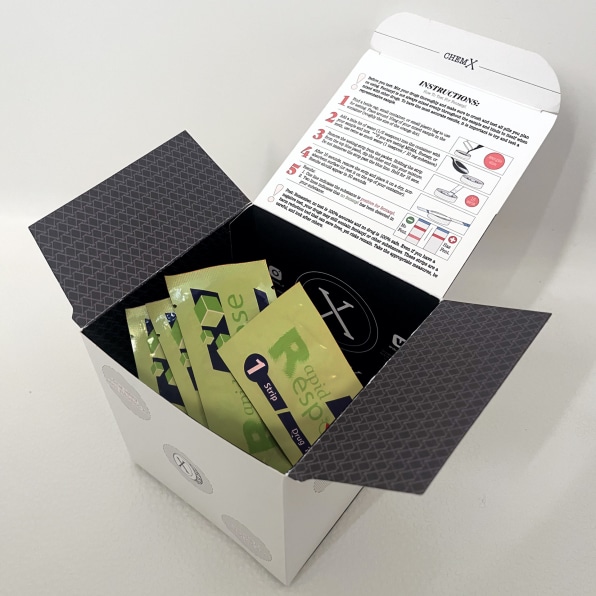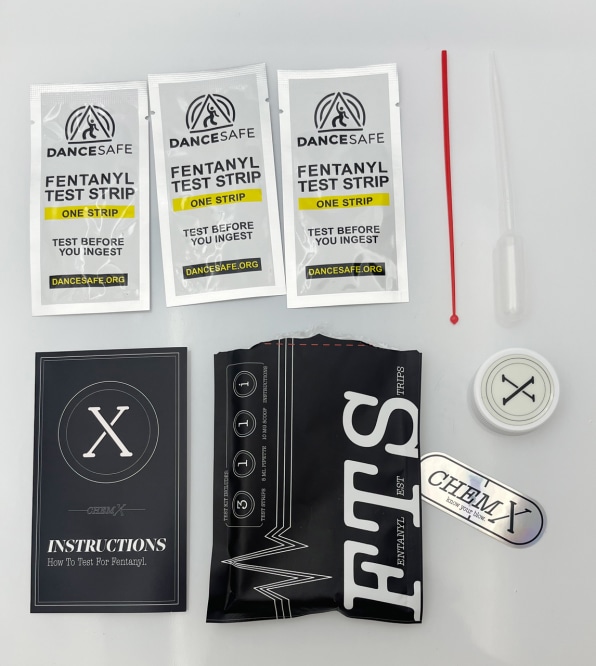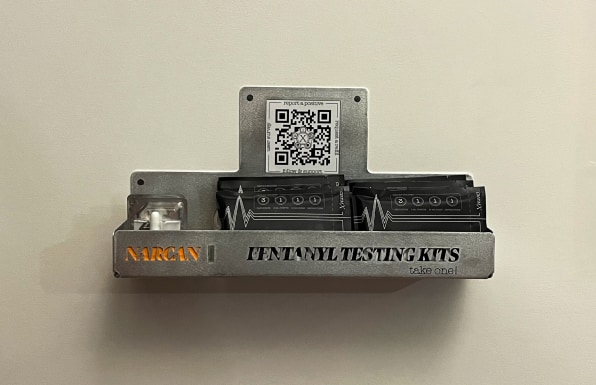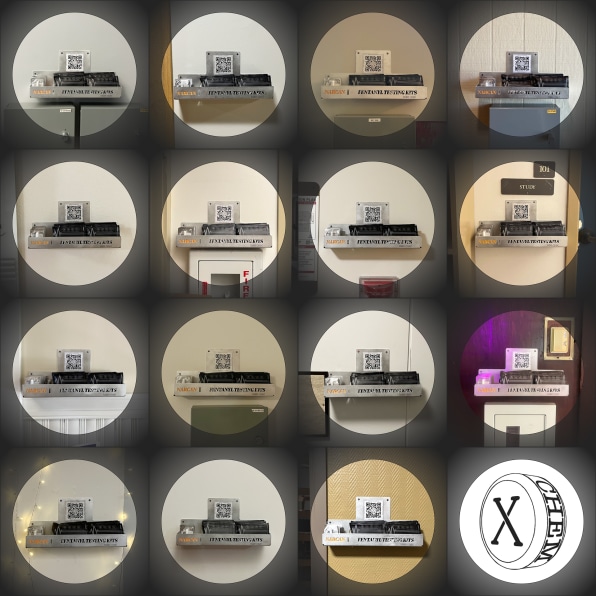[ad_1]
When Alec Manko was a freshman at Stanford, an older student died of an overdose resulting from drugs laced with fentanyl. Manko began thinking about ways to protect his community from the substance, which is the cause of one in every five deaths among young people in California.
Manko, now a 22-year-old senior studying product design, came to see the fentanyl crisis partly as a design failure. Life-saving interventions were out there—in the form of rapid-testing strips and the overdose-reversing drug Narcan—but they weren’t in the hands of people who needed them, at the moment when it actually mattered.
Discouraged by archaic “Just Say No” educational policies he’d been taught in school, he came up with Chem-X: a harm-reduction campaign guided by human-centered design thinking, aimed at equipping young people with the tools they need to survive college amid the opioid crisis.

Chem-X is part of a burgeoning wave of creative, grassroots campaigns trying to counter this deadly public health scourge, including the Oakland-based FentCheck, which activates volunteer networks to distribute fentanyl test strips to community hot spots free of charge. Manko is pushing that model further—designing a whole new product and brand identity around the test strips, in the hopes of instantiating new social norms and safer habits around college drug use.
“Our friends don’t have to die,” Manko said. “We can be college kids, we can experiment, but let’s be the smart college students that we are, and keep each other safe and accountable.”

The centerpiece of Chem-X is a 4×6-inch aluminum packet—small enough to fit into a pocket or purse—that contains three fentanyl test strips, a plastic pipette, a 15mg scoop, a bottle cap for diluting and mixing drugs, and a pamphlet with detailed instructions.
Manko spent about four months designing and testing the product. The first iteration of Chem-X was a cardboard cube, designed to look like a six-sided die (inspired, in part, by the popular college drinking game ‘beer die’) and stocked with standard-issue test strips he received from Santa Clara county. He placed these cubes in fraternity houses around campus, observed how his friends and classmates were actually using them, and adjusted accordingly.
The graphic design was too subtle to grab people’s attention, he noted, and the strips didn’t come with clear-enough instructions. The county-issued rapid tests were designed for basic substance detection—the kind an employer would use for a drug test—rather than harm reduction. Finally, the whole apparatus was too bulky to transport surreptitiously. The kits would need to be subtle enough to take into a club or music festival.
Manko also noticed that users encountered certain areas of friction during the testing process itself, such as struggling to estimate what 15 milligrams of powder looks like, or trying to find a pipette in the middle of a loud party. He came up with the idea of a fully self-contained, lightweight testing kit, ordered each individual piece from wholesale suppliers, and procured rapid harm-reduction test strips from the Canadian nonprofit, DanceSafe.
Manko adjusted the packet’s graphic design to feel authentic, trustworthy, and desirable to college students. “How do we frame a scary public health thing to make it feel like a guerilla campaign that came from one of us?” he asks. The look is bold and minimalist, and the voice of the copy on the packet and the instructions inside are meant to sound like it’s coming from a friend rather than an authority figure. (Included on the back of the instructions—which Manko also designed—is a “field guide for safe exploration” that offers ways to minimize risks associated with popular recreational drugs, counseling users to take electrolytes on MDMA or to avoid mixing cocaine and alcohol.)

To distribute the tests, Manko created a laser-cut aluminum wall-mounted shelf that fits about 12 testing packets and holds 4 doses of Narcan. The wall-mount system also includes a QR code that students can scan to request more supplies or anonymously report a positive test result.
On May 9—Fentanyl Awareness Day—Manko installed the Chem-X shelves in 25 student residences across Stanford’s campus. He’s already had to restock several times.

Manko, who continues to heat-seal each packet himself in his fraternity house, estimates that the cost of the entire Chem-X operation so far—500 packets and 25 wall-mounts— has come to less than $6,000. Each packet costs about $3.60 to produce. Stanford’s substance-use education program has enthusiastically supported Manko by footing the bills, but Chem-X is otherwise operating outside the university’s official purview.
Manko is gratified by the success of the project but tormented by the fact that he, a student, was able to craft an effective solution in a matter of months for just $3.60 per unit.
“Why did it take till now to do this?” he asks. “Why have we waited so long, and sat on our hands, and literally let hundreds of people in this country die unnecessarily?”
After he graduates in June, he plans to launch Chem-X at universities across the country, in hope that the project takes on its own life—while saving many.
[ad_2]
Source link

